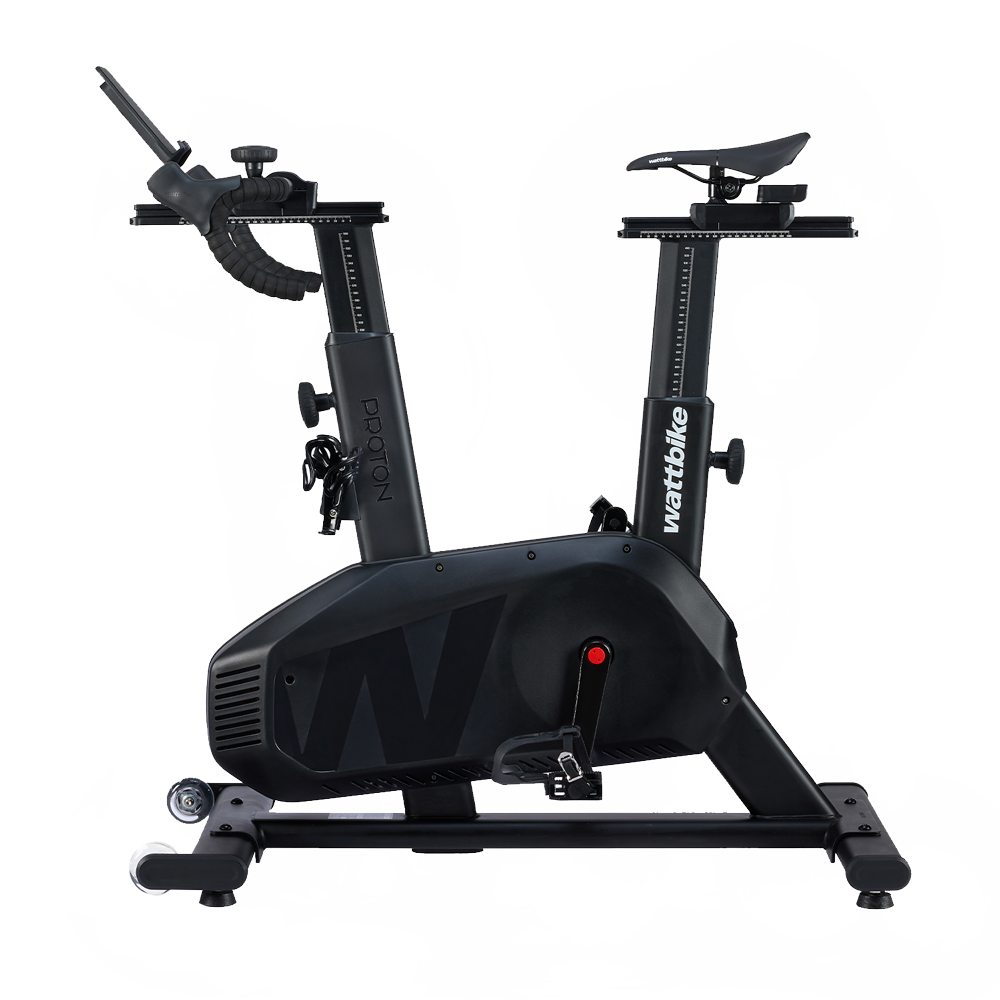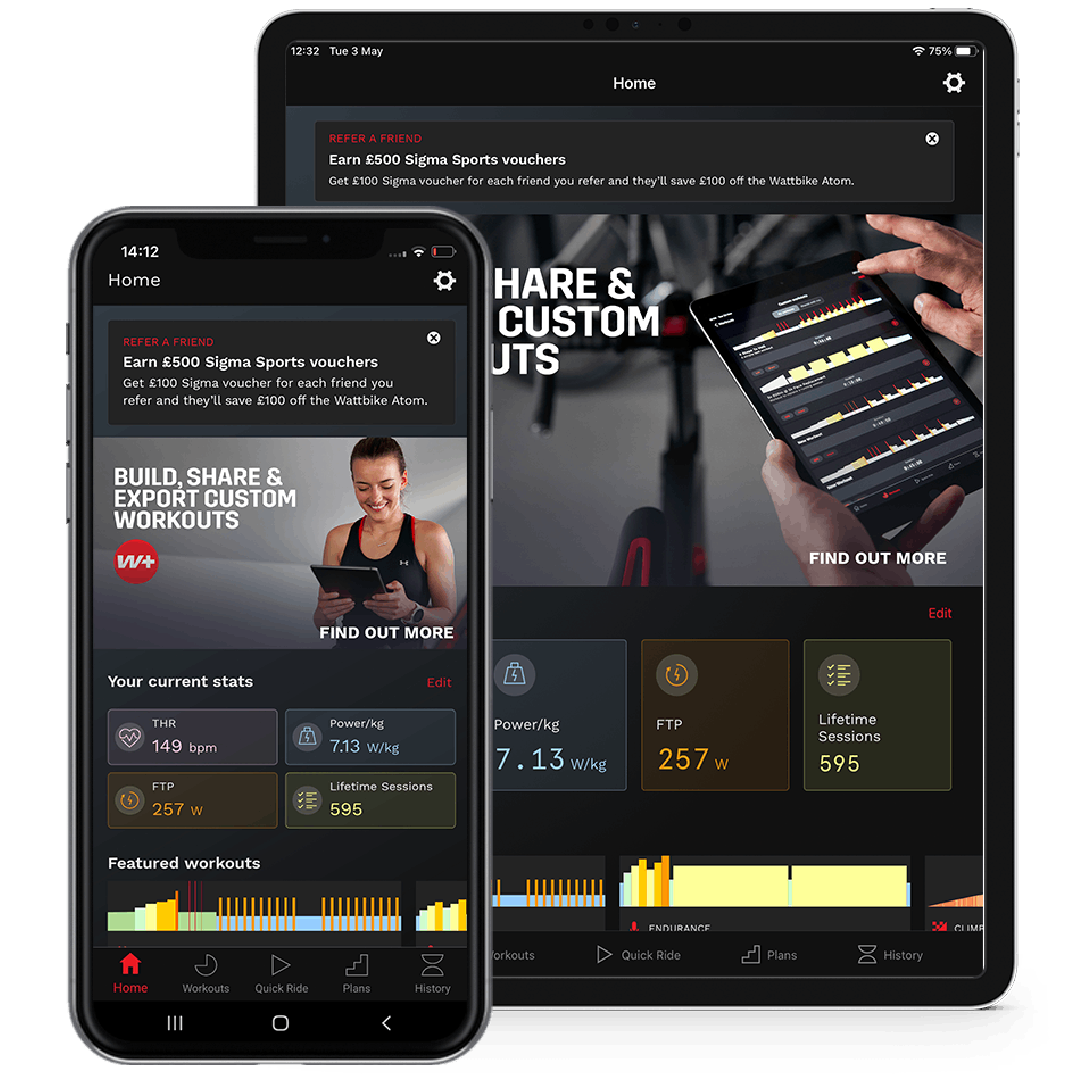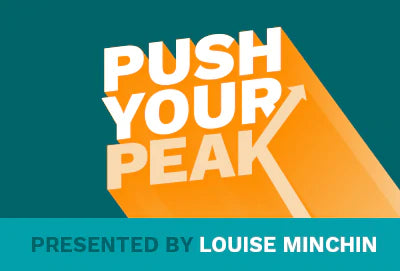Your Cart is Empty
shop
training & apps
support & services
news & information
Knee Pain & Cycling
November 08, 2021 5 min read
Along with a killer wattage output and an enviable bike, one of the ultimate goals for cyclists is being able to enjoy any ride pain-free. Unfortunately, knee pain is all too common among cyclists and you may find yourself searching the web thinking ‘my knees hurt when cycling’ - well the good news is that you don’t have to suffer in silence. Read on to find out everything you need to know about cycling knee pain: the causes, the most common complaints, and most importantly, what you can do about it.

What You'll Learn:
- Is it OK to Cycle with Knee Pain?
- Medical Knee Pain
- Pain at the Front of the Knee
- Pain Behind the Knee
- How to Set Your Bike Up to Avoid Knee Pain
Is it OK to Cycle with Knee Pain?
In general terms, the knee has three main areas where pain might present itself: the front of the knee (the anterior), the side or inside of the knee (the medial), and the back or behind the knee (the posterior). Whether you're a beginner to indoor cycling or have years of experience, if one or more parts of your knee hurts when cycling, you should definitely stop and assess the source before you cause some serious, long-term damage.
One of the most common causes of any sport injury is overuse, and this should always be your first port of call when tackling pain when cycling, whether you prefer an outdoor bike or indoor smart bike trainer. Ask yourself if you’re overdoing it, either by cycling for too long at one time or overtraining.
Be honest with yourself and look for other symptoms, such as chronic fatigue, irritability, and insomnia. If any of these ring a bell, all you need to do is ease back on your training (easier said than done, we know) and take a few rest days. You may well find the knee pain disappears by itself if this was the cause.
Medial Knee Pain When Cycling
If you suffer from medial knee pain when cycling, you’re not alone - it’s one of the most common complaints among cyclists, with nearly a third of all cyclists reporting medial knee pain at some point in their outdoor or indoor cycling experience. While medial knee pain can be caused by a tight IT band or muscular imbalance, one of the easiest fixes is checking your cleat position. Cleats should always be set straight, otherwise you run the risk of creating weaknesses and imbalances in your legs.
Anterior Knee Pain When Cycling
If you suffer from pain at the front of the knee - better known as anterior knee pain - the good news is this generally isn’t as severe as medial knee pain. Anterior knee pain is usually caused by tight or overused quad muscles, as the quads join directly to the patella (or kneecap). I
f your pain is at the front of the knee, the first thing to do is check your bike fit and positioning. If your saddle is too low, you’ll be putting too much pressure through your quads and onto your kneecap, which will cause pain. You may feel like you get better power this way, but ultimately it will be at the expense of this important joint.
One of the best ways to treat anterior knee pain is with foam rolling. This technique is proven to improve blood flow and reduce tightness and inflammation in joints and muscles. Foam roll two or three times a week to ease the tension in your quads as well as keeping your IT band healthy.
Pain Behind Knee When Cycling
In the same way anterior knee pain can be caused by your saddle being too low, posterior knee pain - or pain behind the knee - can be caused by the saddle being too high. Pain behind the knee when cycling could simply be down to over-flexion of the leg when pedalling. If your saddle is too high, your hamstrings will have to overstretch and this could present as pain behind the knee.
In order to counteract pain behind the knee when cycling, it’s a good idea to stretch the backs of your legs whenever possible. The easiest way to do this is by standing with your toes on a step and allowing your heels to stretch downwards. This will stretch your hamstrings as well as your calves, and should feel like a welcome relief if you’ve been suffering from posterior knee pain.

Bike Set Up Guide To Fix Cycling Knee Pain
Every cyclist should take the time to have a professional bike fit before embarking on any kind of long distance cycling or intensive cycle training plan. The way your bike is set up will have huge implications on the way you ride, the way your joints and muscles move, and ultimately any pain you may feel. Check out the quick tips below to make sure your bike is set to its optimum position to prevent knee pain.
See our full set up guide here
Saddle Height
As mentioned above, whether on your Wattbike Atom smart bike or road bike, a saddle that is too high could cause posterior knee pain, while a saddle that is too low could cause anterior knee pain. As a general rule, your saddle should be in line with your hip when you stand next to it.
For a proper fit, sit on your bike with your foot unclipped, and put your heel on the pedal when it’s at its lowest point. Your leg should be completely straight, so that when you clip in there is a slight bend in the knee.
Saddle Comfort
If you are uncomfortable in the saddle, you may end up sitting askew which will inevitably cause knee pain. Trial wearing underwear versus not wearing underwear when cycling, as some people find this has a huge effect on their saddle comfort. You can also test out different saddles, from a racing saddle to a comfort saddle, to find the right comfort level for you. The more balanced you are in the saddle, the less likely you are to feel pain.
Handlebars
When it comes to handlebar set up, there’s a huge difference between settling for discomfort in favour of speed, or opting for ultimate comfort throughout your ride and compromising slightly on your aerodynamics. If you’re looking to adjust your handlebars to prevent pain, you should be prioritising comfort. This will mean a slightly higher position for your handlebars, and you can place more spacers under your stem to achieve this.

Also in Health Hub

Healthspan: What You Need to Know to Live a Healthier, Longer, Life
October 08, 2025 5 min read
What if the key to living not just longer, but better, lies in your fitness - not your genes?
In this deep dive into healthspan, we explore how improving your cardiorespiratory fitness (CRF) through smart, low-impact training can enhance your quality of life. Learn how combining aerobic conditioning, strength training, and regular VO2-based testing with tools like Wattbike Healthspan can help you stay stronger, healthier, and more resilient for decades to come.

The Wattbike Healthspan Check: The Simple Way to Monitor Health and Track Improvement
September 17, 2025 2 min read
Discover how the new Wattbike Healthspan Check helps you understand your fitness and long-term health in just 6 to 12 minutes. Backed by VO₂ Max science and available in the Wattbike Hub app, it delivers a personalised Healthspan Score plus tailored training plans to keep you improving over time.

Getting fit by 40 with Simon Hooper
August 12, 2022 1 min read
Earlier this year, keen cyclist and influencer @Father_of_Daughters, aka Simon Hooper, upgraded his indoor training set up from aturbo trainerto theWattbike Atomsmart bike to hit one specific goal...to be the fittest he’s ever been before he turns 40.
Get the latest!
News, training tips, offers and more, straight to your inbox.








